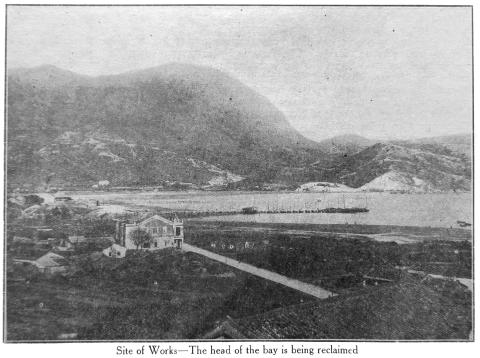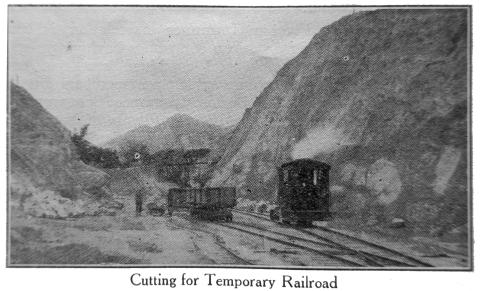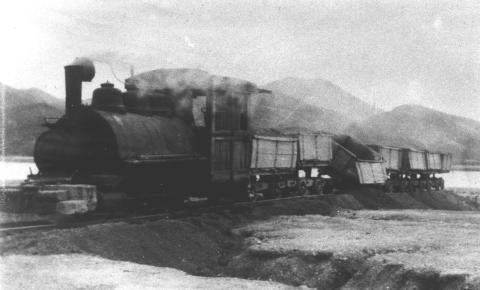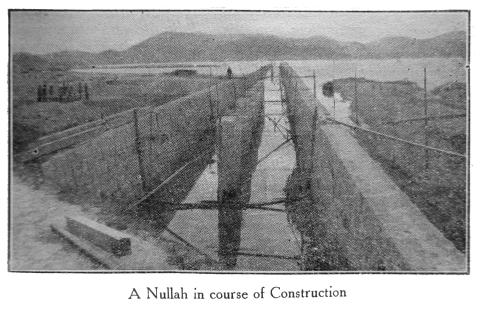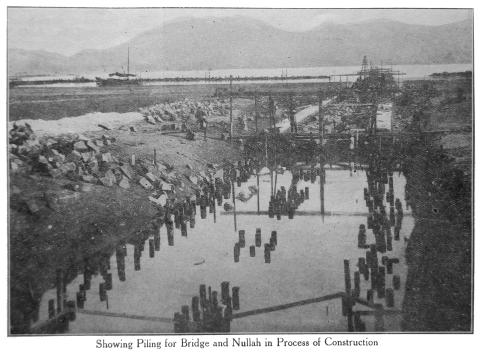To meet Hong Kong's desperate shortage of housing ( a problem which has never been resolved) the largest reclamation project emabarked upon since Hong Kong's foundation was commenced in Kowloon Bay by the Kai Tak Land Investment Co. , founded in 1912 by Sir Kai Ho-kai ( born as Ho Shan-kai 何栖啟 ) and property developer Au Tack ( 區德 )
The reclamation works got off to a slow start and did not begin in earnest until about 1916. The intention was to reclaim some 230 acres which would be divided into residential plots where “wealthy Chinese would be able to live in peace and comfort”. Architects for the reclamation project were Messrs Little, Adams and Wood.
The earth fill for the project was obtained by excavating the hillsides around Tai Wan Bay (today’s Whampoa district). Even the granite rock for facing the sea wall and foundations was obtained from a quarry at the same site adjoining the land occupied then by the Tai Wan Glass Factory. To transport the fill to the reclamation site a temporary 3 ft. gauge railway line was laid using locomotives which had probably been imported from USA for use on the 2nd Hong Kong Island Praya reclamation scheme completed in 1904. To reach Kowloon Bay from Tai Wan Bay, a cutting was excavated through Sacred Hill (Sung Wong Toi) which must have enraged some of the local village ‘Feng shui” experts…. and increased costs somewhat for the necessary “spirit pacification procedures”.
Four new storm water drainage channels “Nullahs” were also built for water from the surrounding hills to drain into the sea and many older residents will remember these storm drains also served another vital function until quite recent years … sewage disposal outlets into the harbour. Hong Kong used to greet arrivals at the former Kai Tak airport with a good whiff of sewage when the plane’s engines revved up in reverse thrust.
Between 17 - 23 August 1923 a strong typhoon hit Hong Kong. Reclamation works, then in progress for the Kai Tak Land Investment Co. at Kowloon Bay, were hit by strong winds demolishing most of the temporary structures. In the photo above, we can see the steam locomotives used on a temporary railway buried under piles of debris. Is unlikely that the engines were seriously damaged and almost certainly lived to see another day in full steam. The locomotives were 3ft in gauge and appear to be of American manufacture. The locomotives in this picture do not appear to be new and it is possible they had been used several years earlier on the Tai Tam Reservoir Dam project, completed in October 1917.
The Kai Tack Land Investment’s plan never quite succeeded, the company folded in 1924 and land reclaimed was taken over by the government to be used later for Hong Kong’s airport and an RAF base.
